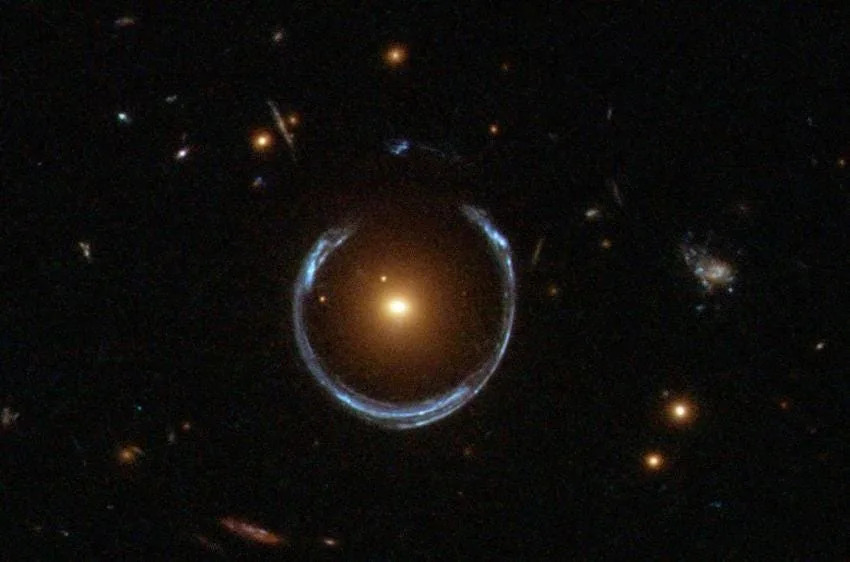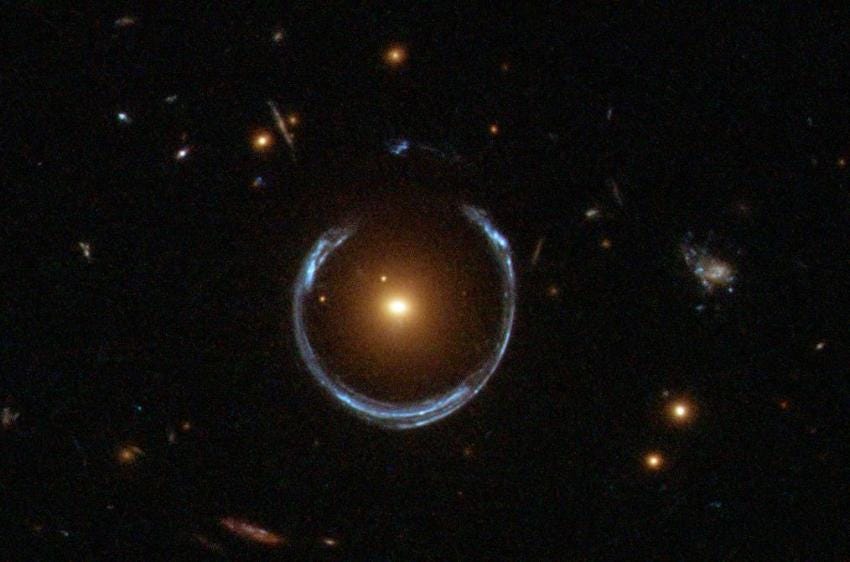You’ve heard of a supermassive black hole. Now, what about an “ultramassive” black hole?
That descriptor is the only word researchers could use befitting a black hole recently spotted lurking far from Earth that is believed to be so gigantic that it’s the approximate size of 36 billion suns.
That’s right, billion with a “b.” It’s also believed to be a whopping 10,000 times heavier than the black hole at the center of our own Milky Way galaxy.
In case you’re wondering, that would make it large enough to be the most massive black hole ever detected in the cosmos, according to a team of researchers who announced their find Thursday, Aug. 7, in a press release.
Unsurprisingly, the black hole exists in one of the most massive galaxies ever observed – the Cosmic Horsehoe.
Here’s what to know about the black hole discovery.
Black holes: Physicists detect largest-ever merger of 2 black holes equal in size to 240 suns
What are black holes?
Supermassive black holes, regions of space where the pull of gravity is so intense that even light doesn’t have enough energy to escape, are often considered terrors of the known universe.
When any object gets close to a supermassive black hole, it’s typically ensnared in a powerful gravitational pull. That’s due to the event horizon – a theoretical boundary known as the “point of no return” where light and other radiation can no longer escape.
As their name implies, supermassive black holes are enormous (Sagittarius A*, located at the center of our Milky Way, is 4.3 million times bigger than the sun.) They’re also scarily destructive and perplexing sources of enigma for astronomers who have long sought to learn more about entities that humans can’t really get anywhere near.
Ultramassive black hole found in Cosmic Horseshoe 5 billion light-years away
The Cosmic Horseshoe galaxy is home to what a team of astronomers claim may be the most massive black hole ever detected
The discovery of the Cosmic Horseshoe black hole came about somewhat serendipitously as researchers were studying dark matter distribution in a galaxy located a distant 5 billion light-years from Earth.
The team was able to detect the galaxy’s black hole using a combination of methods.
The first was stellar kinematics, which involved studying the motion of the stars within the galaxy as they moved around the black hole. But because the galaxy is so far away, researchers couldn’t precisely pin down the precise region where the black hole is located.
That’s when they then turned to a process called gravitational lensing. As first predicted by Albert Einstein, gravitational lensing occurs when a massive celestial body causes a sufficient curvature of spacetime for the path of light around it to be visibly bent, as if by a lens.
Because of the way the phenomena appears to those using a telescope, they’re referred to as Einstein Rings. But in the case of the Cosmic Horseshoe, the passing light of a background galaxy is being warped so much that it appears more like, well, a horseshoe.
“This is amongst the top 10 most massive black holes ever discovered, and quite possibly the most massive,” Thomas Collett, study author and an astrophysicist at the University of Portsmouth in England, said in a statement.
Size of black holes, host galaxies appear connected
The researchers believe their discovery will help astronomers better understand the connection between supermassive black holes and their host galaxies. Because the host galaxy and the black hole are so large, it appears to suggest that the size of both is inextricably linked, Collett said.
“When galaxies grow, they can funnel matter down onto the central black hole,” Collett said.
While some of the galaxy’s matter can feed a growing black hole, some can produce a quasar – “a rare and extreme class of supermassive black holes that are furiously pulling material inwards,” according to NASA. Quasars can dump huge amounts of energy into their host galaxies, which stops gas clouds from condensing into new stars.
Up next, the researchers hope to use data from the European Space Agency’s Euclid space telescope to detect more supermassive black holes and their host galaxies.
The research was published Aug. 7 in Monthly Notices of the Royal Astronomical Society.
Eric Lagatta is the Space Connect reporter for the USA TODAY Network. Reach him at elagatta@gannett.com
This article originally appeared on USA TODAY: ‘Ultramassive’ black hole found in Cosmic Horsehoe could be biggest ever

